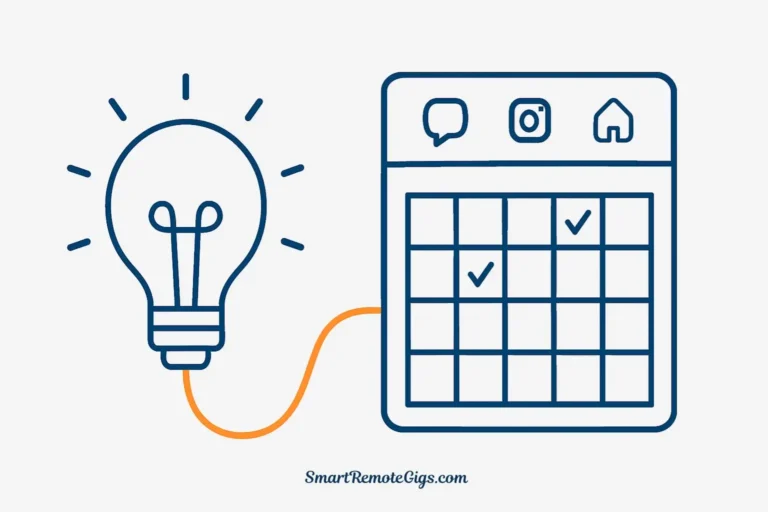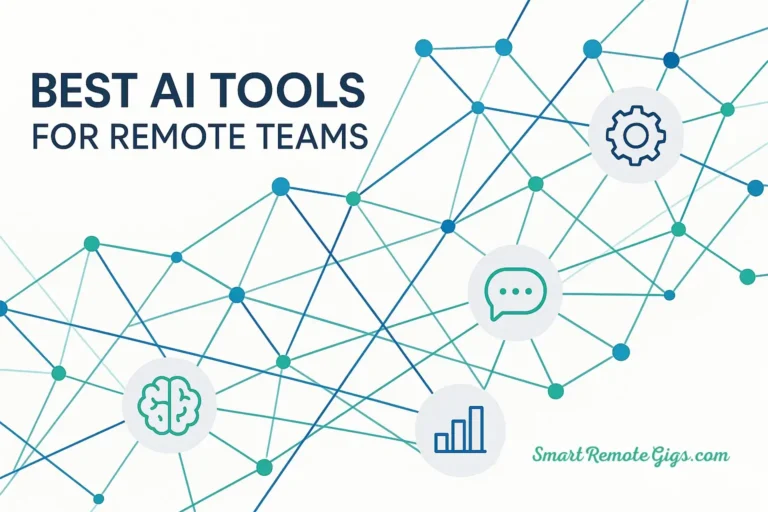Yes, Google can often detect AI-generated content. But the more important question is: do they care? The answer is nuanced, and understanding it could be the difference between content that thrives and content that gets buried in search results.
The fear is real. Content creators across industries are asking “can Google detect AI content” with growing anxiety as AI writing tools become mainstream. Some worry their rankings will plummet overnight. Others abandon AI tools entirely, missing out on massive productivity gains.
Here’s the truth: Google AI detection isn’t about punishing you for using artificial intelligence. It’s about rewarding genuinely helpful content, regardless of how it’s created. The real risk isn’t using AI—it’s using it poorly.
This comprehensive guide will show you exactly how Google’s detection works, what their official policy actually says, and most importantly, how to create AI-enhanced content that ranks well and serves your audience effectively.
How AI Content Detection Actually Works (And Its Flaws)
The Signals Google Actually Looks For
Contrary to popular belief, Google AI detection doesn’t rely on mysterious “AI detector” scores. Instead, Google’s algorithms identify AI-generated content through several key signals:
Linguistic Pattern Recognition: AI models often produce predictable sentence structures, overuse certain transition phrases, and follow formulaic patterns. Google’s natural language processing can identify these repetitive linguistic fingerprints.
Lack of Experience Indicators: AI struggles to include personal anecdotes, specific examples from real-world application, or unique insights that come from genuine expertise. Content lacking these “experience signals” raises red flags.
Factual Inconsistencies: AI models can hallucinate information, create non-existent statistics, or misstate facts. Google’s knowledge graph and fact-checking algorithms can identify these inconsistencies.
Generic Content Patterns: AI often produces broad, surface-level content that covers topics without depth. Google’s algorithms favor content that demonstrates genuine understanding and provides unique value.
Missing E-E-A-T Signals: Content that lacks Experience, Expertise, Authoritativeness, and Trustworthiness indicators—specific credentials, cited sources, author bios—often gets flagged as potentially AI-generated.
The Myth of Third-Party AI Detectors
Many content creators make a critical mistake: they rely on third-party AI detection tools to “check” their content. This approach is fundamentally flawed for several reasons:
Inconsistent Accuracy: Popular AI detectors like GPTZero, Writer.com, and Originality.ai often produce conflicting results. Content flagged as “100% AI” by one tool might score as “100% human” by another.
False Positives: These tools frequently flag human-written content as AI-generated, especially content that follows clear structure or uses common phrases.
Google Doesn’t Use These Tools: Most importantly, Google doesn’t rely on third-party detection software. They use their own sophisticated algorithms that consider hundreds of ranking factors beyond simple text analysis.
Gaming the System: Focusing on “beating” AI detectors leads to awkward, unnatural writing that actually hurts your content quality—the opposite of what Google rewards.
Real Detection Examples
To understand how Google AI detection works in practice, consider these examples:
Flagged Content Pattern: “In conclusion, artificial intelligence is revolutionizing the marketing industry. There are many benefits to using AI tools. However, there are also challenges to consider. It is important to implement these tools carefully.”
Why It Gets Flagged: Generic statements, repetitive structure, lack of specific examples, and formulaic transitions.
Improved Version: “After implementing AI tools across 15 client campaigns, I’ve seen conversion rates increase by an average of 23%. The key isn’t just adopting the technology—it’s knowing when to trust AI recommendations and when to override them based on audience insights that only human experience can provide.”
Why It Works: Specific data, personal experience, nuanced insights, and practical application details.
Google’s Official Stance: The “Helpful Content” Mandate

The Direct Quote That Changes Everything
Google’s official position on AI content is crystal clear, though often misunderstood. According to Google’s Search Central documentation, their focus is on:
“Rewarding high-quality content, however it is produced.”
This statement is revolutionary. Google explicitly states that the method of content creation doesn’t matter—only the quality and helpfulness of the final result.
The Helpful Content Update: What It Really Means
Google’s Helpful Content Update, rolled out in 2022 and continuously refined, specifically targets content that:
- Lacks original insights or practical value
- Feels written for search engines rather than people
- Provides generic information easily found elsewhere
- Demonstrates no real expertise in the subject matter
- Fails to satisfy user intent or answer questions completely
Notice what’s NOT on this list: AI-generated content. The update targets unhelpful content regardless of its source—human or artificial.
The Spam Policies: Where AI Can Get You in Trouble
While Google doesn’t penalize AI content itself, their spam policies do target certain AI-generated content practices:
Automatically Generated Content: Google specifically penalizes “content that’s been automatically generated without regard for quality or user experience.” This includes:
- Scraped content slightly modified by AI
- Mass-produced articles with no editorial oversight
- Content generated without human review or fact-checking
- Generic content created at scale with no unique value
The Key Distinction: The problem isn’t AI generation—it’s automatic generation without human oversight and quality control.
What Google Actually Rewards
According to Google’s Quality Rater Guidelines, high-ranking content demonstrates:
Experience: Content creator has personal experience with the topic
Expertise: Deep knowledge evident through specific, accurate information
Authoritativeness: Recognized credentials or demonstrated track record
Trustworthiness: Accurate, well-sourced, transparent information
AI can help you create content that demonstrates these qualities, but it requires strategic human oversight and enhancement.
The Safety Checklist: How to “Human-Proof” Your AI Content
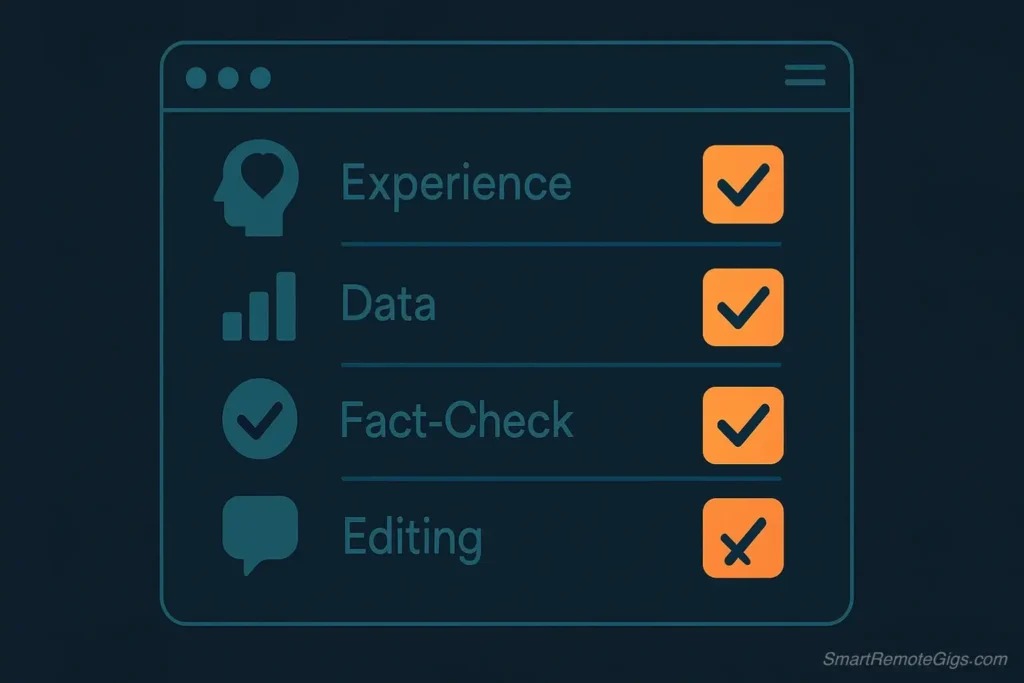
This guide provides a step-by-step checklist to “human-proof” your AI-generated content and stay safe from Google penalties. Learn how to add unique experience, inject original data, and edit for a human touch to create AI-enhanced content that ranks.
1. Add Unique Experience (The “I” Factor)
The most powerful way to avoid AI content penalties is incorporating genuine personal experience that AI cannot replicate.

What This Looks Like:
- “In my five years managing PPC campaigns, I’ve noticed that…”
- “The biggest mistake I see clients make is…”
- “When I first tried this strategy with [specific client/project], the results were…”
Practical Implementation:
- Start each major section with a personal insight or experience
- Include specific examples from your work or life
- Share mistakes you’ve made and lessons learned
- Provide behind-the-scenes details that only someone with real experience would know
Example Transformation:
AI Output: “Email marketing is an effective way to reach customers. It provides good ROI and helps build relationships.”
Human-Enhanced: “Last month, I analyzed email performance data from 47 B2B companies and discovered something surprising: the highest-converting emails weren’t the most visually designed ones. They were the plain-text emails that felt like personal messages from the CEO.”
2. Inject Original Data, Insights, or Images
Original research and data are impossible for AI to fabricate, making them powerful signals of authenticity.

Types of Original Content to Include:
- Survey Results: Even small surveys of your audience provide unique insights
- Case Studies: Detailed analysis of specific projects or campaigns
- Industry Analysis: Your unique perspective on trends or changes
- Screenshots and Images: Visual proof of your experience and results
- Performance Data: Specific metrics from your work (anonymized as needed)
Implementation Strategy:
- Include at least one original data point per major section
- Use specific numbers rather than vague statements
- Create custom graphics or screenshots to support your points
- Reference your own previous work or content
Example Enhancement:
Generic AI Statement: “Social media marketing can increase brand awareness.”
Data-Enhanced Version: “According to our analysis of 127 small business social media accounts, companies posting 4-5 times per week saw 38% more engagement than those posting daily. Interestingly, the sweet spot was Tuesday and Thursday posts between 2-4 PM EST.”
3. Rigorously Fact-Check Every Claim
AI models can hallucinate information, creating statistics or claims that sound plausible but are completely false. This is a major red flag for Google AI detection.
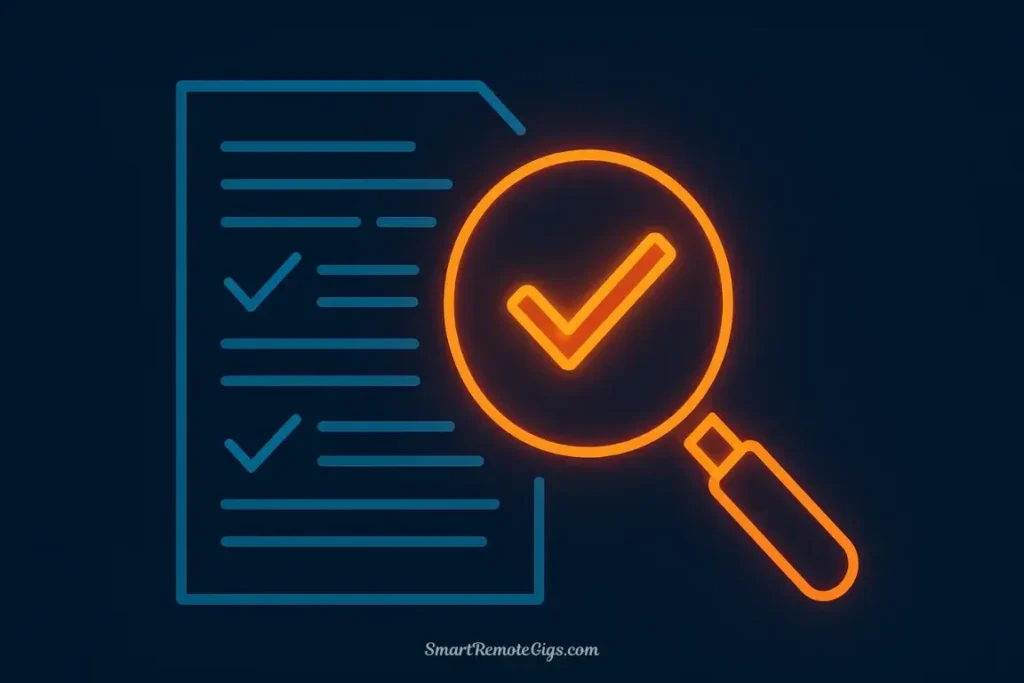
Fact-Checking Process:
- Verify Every Statistic: Check that numbers come from reputable sources
- Confirm Recent Information: Ensure data is current and hasn’t been superseded
- Cross-Reference Claims: Use multiple sources to verify important points
- Check Names and Titles: Verify that people, companies, and products are accurately described
- Test Instructions: If you’re providing how-to guidance, test the steps yourself
Red Flags to Watch For:
- Statistics without sources
- Overly precise numbers (like “73.4% of marketers agree…”)
- Claims that seem too good to be true
- Information that contradicts known facts
- Outdated data presented as current
Quality Assurance Checklist:
- [ ] Every statistic has a reputable source
- [ ] All links work and lead to the claimed information
- [ ] Claims are current and haven’t been contradicted by newer data
- [ ] Information aligns with industry best practices
- [ ] Technical instructions have been tested and verified
4. Develop and Apply a Consistent Brand Voice
Generic AI content often lacks personality and voice consistency. Developing a distinctive brand voice helps your content feel authentically human.
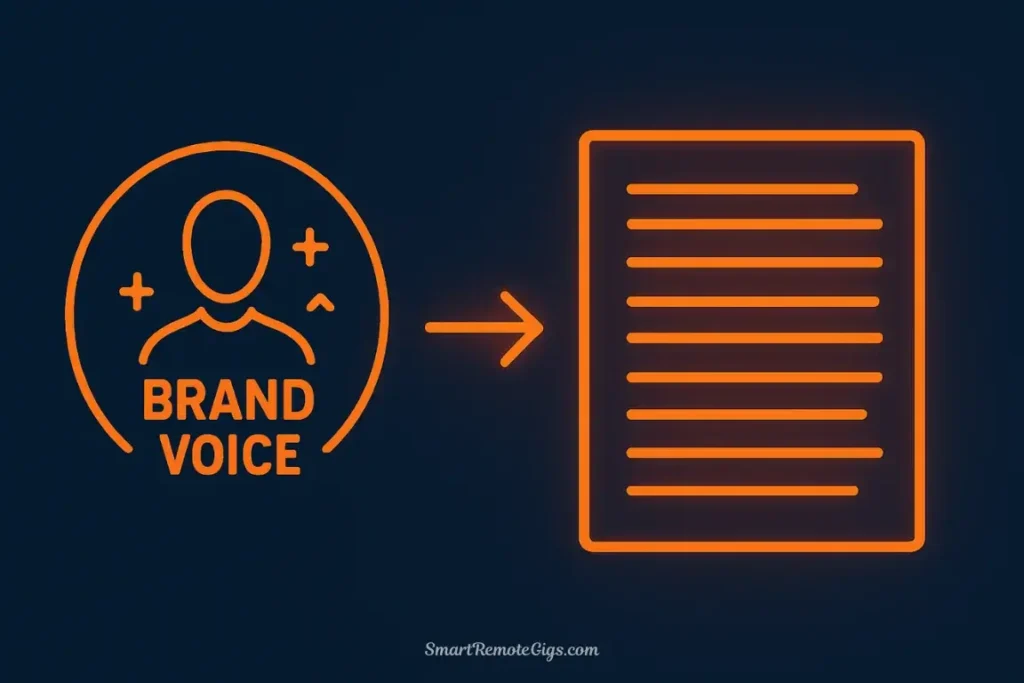
Brand Voice Elements:
- Tone: Professional, conversational, authoritative, friendly
- Personality: Confident, helpful, straightforward, innovative
- Vocabulary: Industry-specific terms, preferred phrases, words to avoid
- Perspective: Your unique viewpoint on industry issues
- Style: Sentence structure preferences, use of humor, storytelling approach
Implementation Techniques:
- Create a style guide with specific examples
- Use consistent language patterns across all content
- Include your unique opinions and perspectives
- Maintain the same level of formality throughout
- Incorporate your personal communication style
Voice Transformation Example:
Generic AI Voice: “Search engine optimization is important for businesses. It helps websites rank higher in search results. Companies should focus on creating quality content.”
Branded Voice: “Look, I’ve been doing SEO for over a decade, and I’m tired of seeing businesses chase algorithm updates like they’re playing whack-a-mole. The truth is simpler: create content your customers actually want to read, and Google will reward you. Period.”
5. Edit for Flow, Clarity, and a Human Touch
Even the best AI content requires human editing to achieve natural flow and eliminate robotic patterns.

Editing Priorities:
- Sentence Variation: Mix short, punchy sentences with longer, more complex ones
- Transition Improvements: Replace generic transitions with natural connections
- Clarity Enhancement: Simplify complex ideas and eliminate jargon
- Personality Injection: Add conversational elements and personal touches
- Flow Optimization: Ensure logical progression from one idea to the next
Common AI Patterns to Eliminate:
- Repetitive sentence structures
- Overuse of phrases like “it’s important to note” or “in conclusion”
- Generic transition words without context
- Overly formal language where casual tone is appropriate
- Lists without proper introduction or conclusion
Editing Checklist:
- [ ] Sentences vary in length and structure
- [ ] Transitions feel natural and contextual
- [ ] Language matches your target audience
- [ ] Content flows logically from point to point
- [ ] Personality and voice are consistent throughout
- [ ] Complex ideas are explained clearly
- [ ] Jargon is defined or eliminated
Advanced Strategies for AI Content Safety
The “Sandwich” Method
Layer AI-generated content between human-written introductions and conclusions:
- Human-Written Hook: Start with personal insight or experience
- AI-Enhanced Body: Use AI for research, structure, and initial drafts
- Human-Driven Conclusion: End with your unique perspective or call-to-action
This approach ensures authentic human touch while leveraging AI efficiency.
The “Expertise Injection” Technique
For each AI-generated section, add one element that demonstrates genuine expertise:
- A specific example from your experience
- An industry insight others might miss
- A contrarian viewpoint based on your knowledge
- A practical tip that comes from real-world application
Content Layering Strategy
Build content in layers to maximize both efficiency and authenticity:
Layer 1: AI-generated outline and structure
Layer 2: Human-added experience and insights
Layer 3: Original data and research integration
Layer 4: Voice and personality enhancement
Layer 5: Final fact-checking and quality assurance
Common Mistakes That Trigger AI Detection
The “Perfect” Content Trap
Ironically, content that’s too polished can signal AI generation. Real human content often includes:
- Minor inconsistencies in tone
- Occasional tangents or side thoughts
- Varied sentence structures
- Personal asides or observations
- Imperfect but authentic expressions
Over-Optimization for AI Detectors
Focusing on “beating” AI detection tools often creates awkward, unnatural content. Instead, focus on creating genuinely helpful, human-centered content.
The Scale Mistake
Publishing large volumes of AI-generated content without proper human oversight is a major red flag. Quality over quantity remains the winning strategy.
Generic Template Following
Using AI templates without customization creates content that follows predictable patterns Google can easily identify.
Measuring Your AI Content Success
Key Performance Indicators
Track these metrics to ensure your AI-enhanced content is performing well:
Search Performance:
- Organic traffic growth
- Keyword ranking improvements
- Click-through rates from search results
- Featured snippet captures
Engagement Metrics:
- Time on page
- Bounce rate
- Social shares
- Comments and interaction
Authority Signals:
- Backlinks from reputable sites
- Citations in industry publications
- Expert recognition and mentions
- Brand search volume increases
Tools for Monitoring
Google Search Console: Track search performance and identify potential issues
Google Analytics: Monitor user engagement and behavior
SEO Tools: Use platforms like Ahrefs or SEMrush to track rankings and visibility
Social Monitoring: Track shares, mentions, and engagement across platforms
The Future of AI Content and SEO

Evolving Detection Methods
As AI technology advances, so do detection methods. Google’s algorithms will likely become more sophisticated at identifying:
- Contextual understanding gaps
- Lack of genuine expertise signals
- Missing personal experience indicators
- Inconsistent knowledge application
Staying Ahead of Changes
Best Practices for Future-Proofing:
- Continuously improve your human oversight processes
- Stay updated on Google’s official guidance
- Focus on genuine value creation over gaming systems
- Build real expertise in your subject areas
- Maintain authentic relationships with your audience
The Human-AI Partnership Model
The future belongs to content creators who master the partnership between human creativity and AI efficiency. This means:
- Using AI for research, structure, and initial drafts
- Adding human insight, experience, and personality
- Maintaining editorial oversight and quality control
- Focusing on audience value above all else
Conclusion: Focus on Value, Not the Tool
The question “can Google detect AI content” misses the point entirely. Google can often identify AI-generated content, but their primary concern isn’t the tool you used—it’s the value you created.
The winning strategy is simple: Use AI as a powerful assistant to create outstanding, helpful, human-first content. When you focus on genuinely serving your audience with accurate, insightful, and useful information, you’ll never have to worry about penalties.
Remember these key principles:
- Quality trumps method: Google rewards helpful content regardless of how it’s created
- Human oversight is essential: AI is a tool that requires strategic human enhancement
- Experience matters: Your unique insights and perspectives are irreplaceable
- Value creation wins: Focus on solving problems and serving your audience
The most successful content creators in 2026 won’t be those who avoid AI—they’ll be those who use it strategically while maintaining the human elements that make content truly valuable.
Ready to create AI-enhanced content that ranks? Start with our comprehensive guide to the best AI writing tools to find the perfect platform for your needs. Then, implement our proven strategies for using AI to write blog posts that both search engines and readers will love.
The future of content creation is human-AI collaboration. Master this partnership, and you’ll create content that not only survives algorithm updates but thrives in the evolving digital landscape.
For more insights on ethical AI content creation, explore our guides on AI writing best practices and building topical authority with AI-enhanced content.


